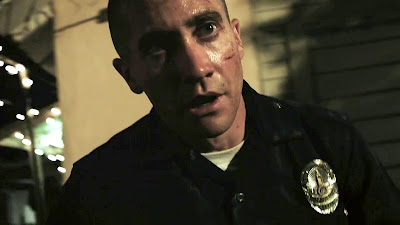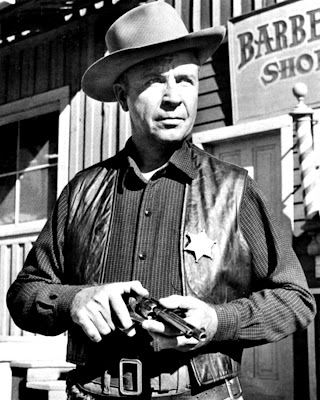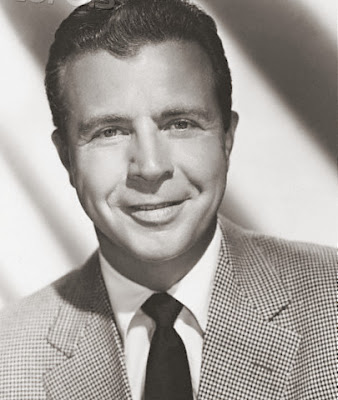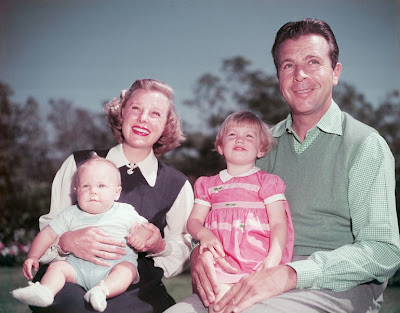 Scan of Kristen Stewart and Garrett Hedlund for the film "On The Road" (2012)
Scan of Kristen Stewart and Garrett Hedlund for the film "On The Road" (2012)Kristen Stewart - On The Road Trailer #2; Before IFC Films launches a domestic trailer, after picking up Walter Salles‘ adaptation of Jack Kerouac‘s classic novel On The Road at Cannes, an international look has been released for the drama. The film stars Garrett Hedlund, Sam Riley and Kristen Stewart, along with the supporting cast of Amy Adams, Kirsten Dunst, Viggo Mortensen, Alice Braga, Elizabeth Moss.
 Kristen Stewart plays Marylou in "On The Road" (2012)
Kristen Stewart plays Marylou in "On The Road" (2012)Kristen Stewart has yet to make a public appearance since news broke in late July that she cheated on boyfriend Robert Pattinson with director Rupert Sanders, but that could be changing soon! Kristen will be traveling to the Toronto International Film Festival in September to promote her latest film, On The Road. TIFF recently announced that there would be a special presentation screening of the film during the festival, with the date of the screening to be announced on August 21. A source confirms with HollywoodLife.com, “Kristen will be there.” The festival will run from Sept. 6 through 16. Source: hollywoodlife.com
 Kirsten Dunst kissing Sam Riley in "On The Road" (2012) directed by Walter Salles
Kirsten Dunst kissing Sam Riley in "On The Road" (2012) directed by Walter Salles Kirsten Dunst plays actress Marion Davies in "The Cat's Meow" (2001) directed by Peter Bogdanovich: a semi-true story of the Hollywood murder that occurred at a star-studded gathering aboard William Randolph Hearst's yacht in 1924.
Kirsten Dunst plays actress Marion Davies in "The Cat's Meow" (2001) directed by Peter Bogdanovich: a semi-true story of the Hollywood murder that occurred at a star-studded gathering aboard William Randolph Hearst's yacht in 1924. Kirsten Dunst is completely satisfying. Dunst has the maturity to play the 27-year-old Davies, and she resembles her, too. She has the right coloring, and she has a similarly sneaky-looking mouth. Most important, she captures the actress' warmth. Davies is one of those rare Hollywood figures whom absolutely everyone liked. Scour books and magazines looking for a bad word about her and you'll come up empty-handed.
Kirsten Dunst is completely satisfying. Dunst has the maturity to play the 27-year-old Davies, and she resembles her, too. She has the right coloring, and she has a similarly sneaky-looking mouth. Most important, she captures the actress' warmth. Davies is one of those rare Hollywood figures whom absolutely everyone liked. Scour books and magazines looking for a bad word about her and you'll come up empty-handed. Dunst helps audiences understand why. Source: www.sfgate.com
Dunst helps audiences understand why. Source: www.sfgate.com Portrait of Marion Davies in 1936. Marion was “blonde, vivacious, full of generous laughter and warmth —and like Carole Lombard— one of the most beautiful women to ever grace an elegant party or a movie set.”
Portrait of Marion Davies in 1936. Marion was “blonde, vivacious, full of generous laughter and warmth —and like Carole Lombard— one of the most beautiful women to ever grace an elegant party or a movie set.” Dick Powell and Marion Davies in "Hearts Divided" (1936) directed by Frank Borzage
Dick Powell and Marion Davies in "Hearts Divided" (1936) directed by Frank Borzage Best known as newspaper tycoon William Randolph Hearst’s girlfriend, Marion Davies was "the love of his life,” in spite of the fact that he never divorced his wife, Millicent, to marry her. Instead, Hearst and Davies lived together at San Simeon, Hearst’s legendary California estate and at her 100 room beach front Santa Monica mansion, which Hearst built for Miss Davies in 1926. It was officially christened as “Ocean House,” a Georgian style structure, which boasted 37 fireplaces.
Best known as newspaper tycoon William Randolph Hearst’s girlfriend, Marion Davies was "the love of his life,” in spite of the fact that he never divorced his wife, Millicent, to marry her. Instead, Hearst and Davies lived together at San Simeon, Hearst’s legendary California estate and at her 100 room beach front Santa Monica mansion, which Hearst built for Miss Davies in 1926. It was officially christened as “Ocean House,” a Georgian style structure, which boasted 37 fireplaces. “THE CAT’S MEOW” reveals an angry and jealously outraged Hearst caught up in a “mistaken identity murder.” Allegedly, Hearst shot and killed Hollywood producer, ‘THOMAS HARPER INCE,’ thinking he was getting his revenge on screen legend ‘CHARLIE CHAPLIN,’ whom he believed to be Marion’s secret lover. According to the late ORSON WELLES, the murder took place on Hearst’s yacht, ‘THE ONEIDA’. Super star comedian and director, Charlie Chaplin was also invited on board, as he had been a friend to both Hearst and Marion ever since his first great successes five years before. However, as time passed, it became obvious to Hearst that Chaplin’s interest in Marion was more than just platonic friendship.
“THE CAT’S MEOW” reveals an angry and jealously outraged Hearst caught up in a “mistaken identity murder.” Allegedly, Hearst shot and killed Hollywood producer, ‘THOMAS HARPER INCE,’ thinking he was getting his revenge on screen legend ‘CHARLIE CHAPLIN,’ whom he believed to be Marion’s secret lover. According to the late ORSON WELLES, the murder took place on Hearst’s yacht, ‘THE ONEIDA’. Super star comedian and director, Charlie Chaplin was also invited on board, as he had been a friend to both Hearst and Marion ever since his first great successes five years before. However, as time passed, it became obvious to Hearst that Chaplin’s interest in Marion was more than just platonic friendship. Soon Marion would be the bait, “The Oneida,” the trap and Hearst “the vengeful spurned lover.” But, it all fell apart. Hearst mistook Ince for Chaplin and shot him in the back of the head. Hearst columnist, LOUELLA PARSONS, was also on board “The Oneida” that night and witnessed the murder. To buy her silence, Hearst is believed to have granted her a lifetime contract with ‘Hearst Newspapers’. The official story on Ince’s death is that he died from “bleeding ulcers.” The cause of death was never investigated by the police.
Soon Marion would be the bait, “The Oneida,” the trap and Hearst “the vengeful spurned lover.” But, it all fell apart. Hearst mistook Ince for Chaplin and shot him in the back of the head. Hearst columnist, LOUELLA PARSONS, was also on board “The Oneida” that night and witnessed the murder. To buy her silence, Hearst is believed to have granted her a lifetime contract with ‘Hearst Newspapers’. The official story on Ince’s death is that he died from “bleeding ulcers.” The cause of death was never investigated by the police. Marion Davies was still denying that Thomas Ince was murdered when years later she and her husband, HORACE BROWN, retreated to their Gloucester County, Virginia estate from the “wilds of Beverly Hills.” Marion was 54 when Hearst died and the two had been together 34 years. Hearst, the owner of “The New York American” and “The San Francisco Examiner” and sixty other publications, including “Cosmopolitan” magazine, was one of the most “powerful forces in American journalism.”
Marion Davies was still denying that Thomas Ince was murdered when years later she and her husband, HORACE BROWN, retreated to their Gloucester County, Virginia estate from the “wilds of Beverly Hills.” Marion was 54 when Hearst died and the two had been together 34 years. Hearst, the owner of “The New York American” and “The San Francisco Examiner” and sixty other publications, including “Cosmopolitan” magazine, was one of the most “powerful forces in American journalism.” ORSON WELLES parodied, emulated and infuriated Hearst in his classic 1941 motion picture, CITIZEN KANE, and Hearst did everything in his power to destroy Welles’s career and reputation—by not running advertisements for the film in the Hearst newspapers across America and the rest of the world. Hearst did “not care what Welles thought of him,” but his bitterness derived mostly from Welle’s portrayal of Marion as the “drunken-untalented” Susan Alexander, Kane’s wife, in the film. In reality, Susan Alexander, the fictional character of the picture—had nothing in common with the “extremely gifted and talented Marion Douras Davies.”
ORSON WELLES parodied, emulated and infuriated Hearst in his classic 1941 motion picture, CITIZEN KANE, and Hearst did everything in his power to destroy Welles’s career and reputation—by not running advertisements for the film in the Hearst newspapers across America and the rest of the world. Hearst did “not care what Welles thought of him,” but his bitterness derived mostly from Welle’s portrayal of Marion as the “drunken-untalented” Susan Alexander, Kane’s wife, in the film. In reality, Susan Alexander, the fictional character of the picture—had nothing in common with the “extremely gifted and talented Marion Douras Davies.” Marion Davies was “one of the most charismatic screen personalities of her generation”. Something about Marion’s “comings and goings” appeared in “glowing headlines” almost weekly—sometimes daily—in Hearst newspapers from Maine to California—a fact not lost on Orson Welles and co-writer Herman Mankiewicz, when it came time for them to write the screenplay for “Citizen Kane,” originally entitled, “American.” Marion married ‘Gloucester’s favorite native son’—Horace Brown—in Las Vegas in 1951. He was, like Hearst, instantly smitten with her. Physically, at least, Horace could have passed for Hearst, himself. He looked like Hearst when in his fifties. Friends often did a “double-take” when they saw Horace for the first time; he so strongly resembled William Randolph Hearst.
Marion Davies was “one of the most charismatic screen personalities of her generation”. Something about Marion’s “comings and goings” appeared in “glowing headlines” almost weekly—sometimes daily—in Hearst newspapers from Maine to California—a fact not lost on Orson Welles and co-writer Herman Mankiewicz, when it came time for them to write the screenplay for “Citizen Kane,” originally entitled, “American.” Marion married ‘Gloucester’s favorite native son’—Horace Brown—in Las Vegas in 1951. He was, like Hearst, instantly smitten with her. Physically, at least, Horace could have passed for Hearst, himself. He looked like Hearst when in his fifties. Friends often did a “double-take” when they saw Horace for the first time; he so strongly resembled William Randolph Hearst. Marion captivated Horace, just as she had captivated W.R. Hearst thirty-five years earlier when Hearst first saw Marion at “The Ziegfield Follies” in New York in 1917. Hearst, like Horace Brown, fell instantly in love. Marion told Horace that when she met Hearst, “W.R. always bought two seats to see her show. One for himself. And, one for his hat.” Like Hearst before him, Horace was “obsessed with Marion.” Horace adored her. Source: www.spywise.net
Marion captivated Horace, just as she had captivated W.R. Hearst thirty-five years earlier when Hearst first saw Marion at “The Ziegfield Follies” in New York in 1917. Hearst, like Horace Brown, fell instantly in love. Marion told Horace that when she met Hearst, “W.R. always bought two seats to see her show. One for himself. And, one for his hat.” Like Hearst before him, Horace was “obsessed with Marion.” Horace adored her. Source: www.spywise.net


















































